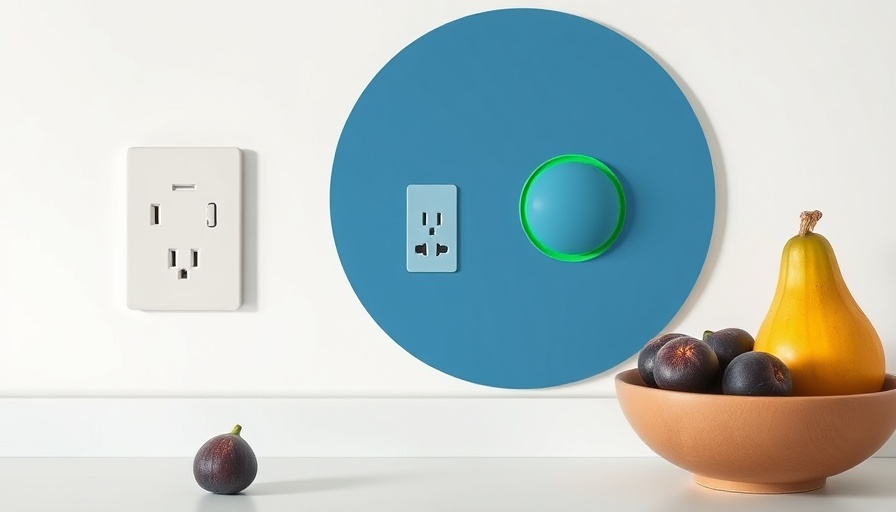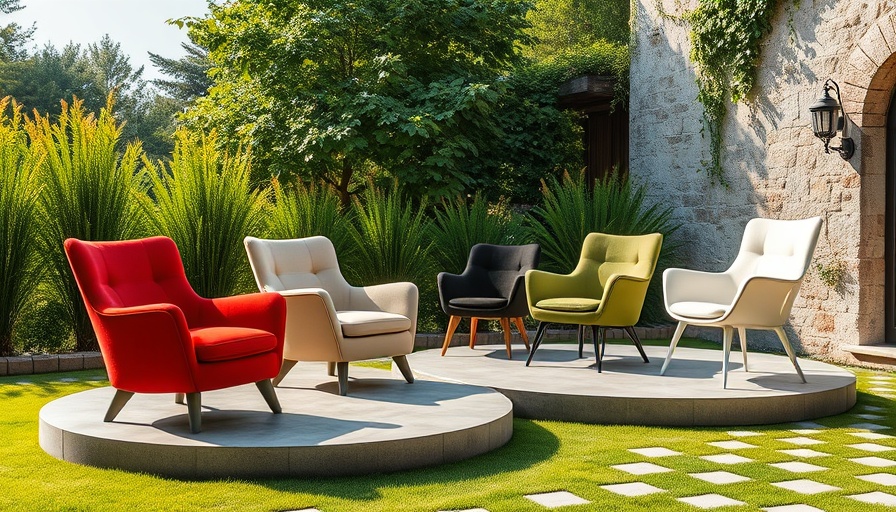
The Future of Home Design: Combining Functionality and Aesthetics
In today's increasingly tech-driven world, homeowners often find themselves grappling with the challenge of integrating technology seamlessly into their living spaces. The 22 System from Bocci simplifies this task by offering a stylish solution that merges functionality with aesthetics. Imagine replacing unsightly power strips and tangle-prone cords with elegantly designed electrical outlets that enhance your home's decor. This innovative approach reflects a contemporary focus on design without sacrificing convenience.
Transforming Clutter into Style
After years of combating electrical clutter, Bocci’s design philosophy allows for a new narrative around electrical components. Traditionally, outlets and plugs have been solely functional, often relegating them to the shadows of our walls, tucked away behind furniture or covered with tangles of cords. However, the Bocci 22 System redefines these components as integral design elements. By offering a palette inspired by the Pacific Northwest, it invites homeowners to think differently about the integration of electrical systems into their living spaces.
Customizable Solutions for Unique Spaces
The versatility of the 22 System lies in its customizable components. Homeowners can choose from a variety of installations, whether in drywall, concrete, or multi-material settings such as tile and glass. This adaptability means that these systems can be seamlessly integrated into any design layout. Moreover, the option to stagger outlets allows these components to meet personal needs without compromising on style. This customization aspect empowers homeowners with the freedom to reimagine their spaces as dynamically as technology evolves.
Comparing the 22 System to Traditional Options
When comparing Bocci’s 22 System to conventional outlets, it becomes evident that innovation is at the forefront of modern design. Traditional outlets often draw attention due to their bulky style and outdated color palettes. In contrast, the 22 System embraces modern aesthetics with its sleek and colorful designs. These components not only serve their functional purpose but also act as a conversation starter and focal point in thoughtfully curated rooms. This transition can also enhance property values, appealing to prospective buyers who appreciate contemporary styles.
Why The 22 System Matters
As we progress further into the era of smart homes, the way we view and utilize electrical systems must evolve. By creating visually appealing alternatives to traditional systems, Bocci is paving the way for new design practices that prioritize beauty and sustainability. These innovations resonate with modern consumers, who increasingly prioritize both function and form in their purchasing decisions. The 22 System exemplifies a crucial trend: acknowledging the intersection of design and technology while addressing the practical needs of homeowners.
Actionable Insights for Homeowners
Investing in a customizable system like the 22 System is not merely a style choice; it is a step towards enhancing the overall functionality of your home. Homeowners looking to remodel or refresh their spaces should consider electrical placement strategically—how can you make these systems attractive rather than obtrusive? De-cluttering your home environment with stylish solutions will not only improve the aesthetics but may also simplify your daily routines. Thoughtful integration of design into utility can elevate the living experience in any home.
What’s Next? The Future of Electrical Systems
As technology rapidly evolves, so too will our needs and expectations of service systems within our homes. The introduction of increasingly complex devices and systems necessitates an adaptable approach to home design. Bocci's 22 System stands at the forefront of this evolution, providing insights into how future designs may integrate even more functionalities. With further innovations on the horizon, we can expect to see even more integration of technology and style in home design.
In conclusion, as our understanding of design and function deepens, so too should our approach to integrating technology within our living spaces. The Bocci 22 System encourages homeowners to rethink the narrative of electrical components—not just as necessary evils but as opportunities for enhancing beauty in our environment. By embracing such innovations, we can foster not only a more organized home but also a more visually compelling one. Explore how the 22 System can transform your space today.
 Add Row
Add Row  Add
Add 




Write A Comment